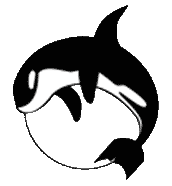|
Crowther, Thomas
2012.
Effects of grazing soil fauna on the functioning and community composition of saprotrophic basidiomycete fungi.
PhD Thesis,
Cardiff University.
Item availability restricted. |
Preview |
PDF
- Accepted Post-Print Version
Download (9MB) | Preview |
|
PDF
- Supplemental Material
Restricted to Repository staff only Download (189kB) |
Abstract
Saprotrophic fungi are key regulators of nutrient cycling and re-distribution within woodland ecosystems. They are the primary agents of wood and leaf litter decomposition, and their hyphal networks, which grow throughout the soil-litter interface, represent highly dynamic channels through which nutrients are readily distributed. These networks also represent the primary resource for a huge diversity of mycophagous soil fauna. This study uses soil microcosms to investigate and compares the potential of soil invertebrates, representing the Isopoda, Myriapoda, Acari, Collembola, Tubificida (Enchytraeidae) and Nematoda, to influence mycelial emergence, morphology, extracellular enzyme production and wood decomposition by cord-forming basidiomycetes. While all invertebrates disrupted mycelial growth to some extent, macrofauna (woodlice and millipedes) generally exerted the strongest grazing pressures. By severing thick cords, these larger invertebrates limited mycelial growth and induced the strongest enzymatic responses. In contrast, while the smaller micro- and mesofauna reduced extension rates of some fungal species, their low-intensity grazing also induced compensatory growth responses, stimulating growth of less palatable fungal species. The varying susceptibility of different fungi to grazers also caused grazers to exert selective pressures on fungal communities. By removing entire networks of the most combative fungal species, the woodlouse Oniscus asellus prevented the competitive exclusion of three fungal opponents from soil and wood. By stimulating growth of the less competitive fungal species, the nematode Panagrellus redivivus, also reversed the outcomes of specific mycelial interactions. Via these two opposing mechanisms soil invertebrates are likely to exert top-down control, influencing the community compositions of saprotrophic fungi. Overall, the effects of grazers on mycelial distribution, decomposition and community compositions were strongly specific, suggesting that the factors which influence invertebrate diversity and community compositions will also indirectly affect mycelial growth and functioning in temperate woodland soils.
| Item Type: | Thesis (PhD) |
|---|---|
| Status: | Unpublished |
| Schools: | Biosciences |
| Subjects: | Q Science > Q Science (General) |
| Funders: | NERC |
| Date of First Compliant Deposit: | 22 August 2023 |
| Last Modified: | 24 Apr 2024 08:25 |
| URI: | https://orca.cardiff.ac.uk/id/eprint/22029 |
Actions (repository staff only)
 |
Edit Item |




 Download Statistics
Download Statistics Download Statistics
Download Statistics
 Cardiff University Information Services
Cardiff University Information Services

